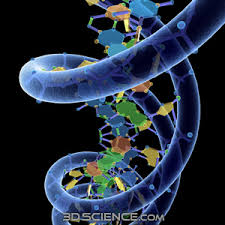
Custom Search
Wednesday, November 18, 2009
An Electronic Clue In The Mystery of DNA Repair
DNA repair machines may home in on the electrical signals created by mutations
Here's a curious puzzle involving DNA molecules. DNA is regularly damaged by ordinary wear and tear and the constant buffeting of ionising radiation. However, cells possess an extraordinary collection of molecular machines such as repair enzymes that rapidly identify the defects and repair them.
The puzzle is how they do it. One idea is that repair enzymes simply float about for long enough and eventually find damaged regions. But the numbers just don't stack up. Genes are usually between 1000 and 1,000,000 base pairs long. By contrast, a typical mutation usually involves just a handful of base pairs. That's just too small to find using a random walk with any reliability. Some other form of active location finding must be going on.
One theory is that mutations change the electrical characteristics of a stretch of DNA and that this creates a signal that repair enzymes can home in on, like electricians locating a break in a circuit. The trouble is that DNA doesn't conduct electricity like a power cable and so it isn't clear how this would work.
Now Arkady Krokhin at the University of North Texas and few buddies have worked out how DNA may do it. The key turns out to be that different regions of DNA have different electrical characteristics. The group has calculated from first principles the way in which charge flows in different regions. They say that in exons--the information carrying parts of genes--the energy spectrum of the molecule allows delocalised electrons to exist. In these areas, charge can flow.
Subscribe to:
Post Comments (Atom)




No comments:
Post a Comment